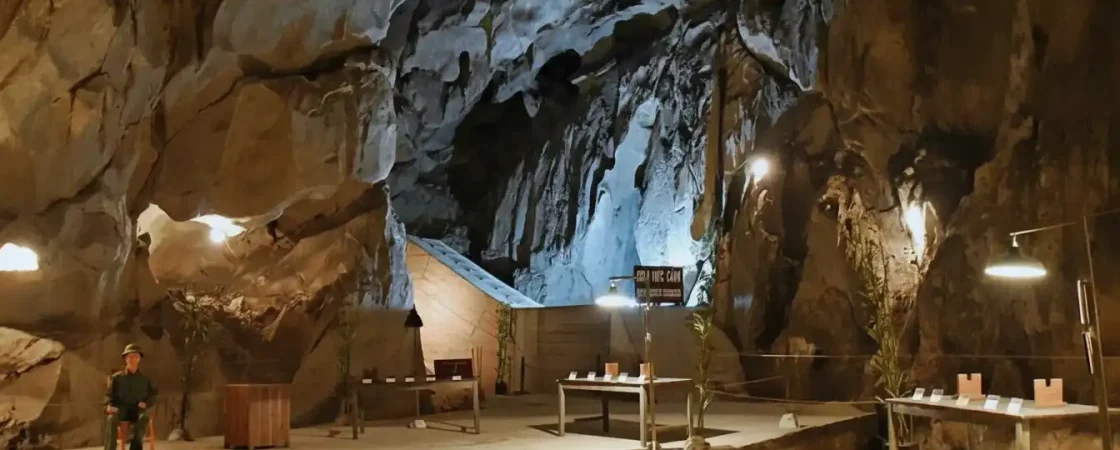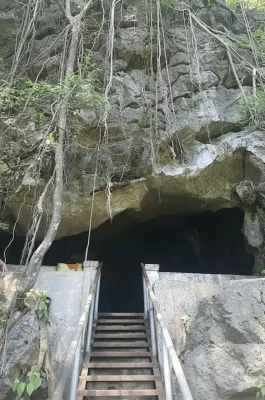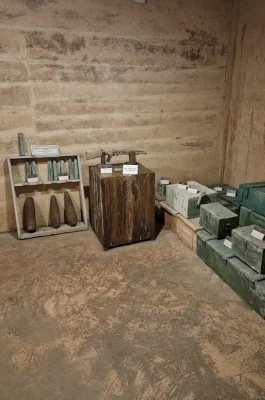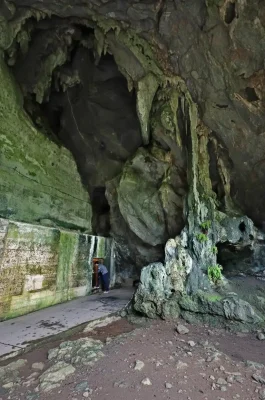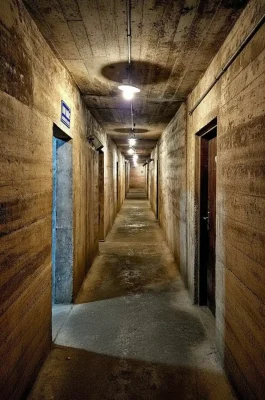The Military Hospital Cave (or Hang Quân Y) is one of the most unique and historically significant sites on Cát Bà Island. Located deep within a limestone karst mountain, this cave was secretly transformed into a fully-functional, bomb-proof facility during the American War (Vietnam War), standing today as a powerful symbol of Vietnamese ingenuity and resilience.
Historical Background and Significance
Original Name: The cave was originally known as Hùng Sơn Cave after a Trần Dynasty general.
Wartime Transformation (1963−1965): Recognising its strategic location—well-hidden by dense forests and offering natural protection—the North Vietnamese forces transformed the empty cavern into a secure field hospital. Its main purpose was to treat wounded soldiers, provide shelter for military personnel and local residents during heavy bombing, and serve as a secure strategic meeting location for military officials.
Wartime Architecture: The facility was a feat of engineering, with its interior reinforced with thick concrete and steel to withstand aerial attacks. The hospital was operational until 1975.
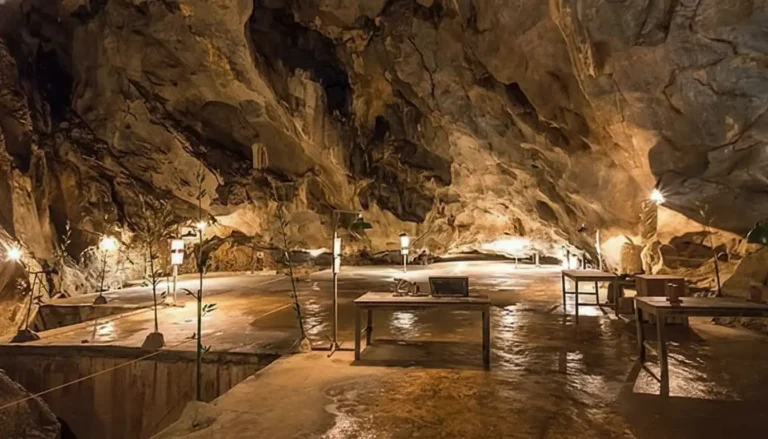
What to Explore Inside (A Three-Story Structure)
The cave is structured into three distinct levels, which visitors can now explore:
First Floor (The Hospital Core): This level features the main medical and functional areas. It consists of 14 functional rooms including:
Operating Theaters (replete with historical equipment models).
Patient Waiting Areas and Recovery Wards (designed to hold over 100 people).
A Pharmacy and Medicinal Storage Room.
Doctor and staff living quarters.
Second and Third Floors (Support & Shelter): These upper, more natural cave sections were used for support activities:
A room designated as a cinema to boost soldier morale.
Physical examination and rehabilitation areas.
A Guard Room and Officers’ quarters.
Visiting the cave offers a poignant, realistic glimpse into the extremely challenging environment faced by medical staff and soldiers during the conflict. The exhibits include historical photographs and life-size mannequins to enhance the historical immersion.
Cultural Relevance
The Military Hospital Cave is a preserved historical relic that acts as an important educational site for both Vietnamese youth and international tourists. It is a powerful place to reflect on the human cost of war and appreciate the resourcefulness of the local people in adapting their environment for survival and service.
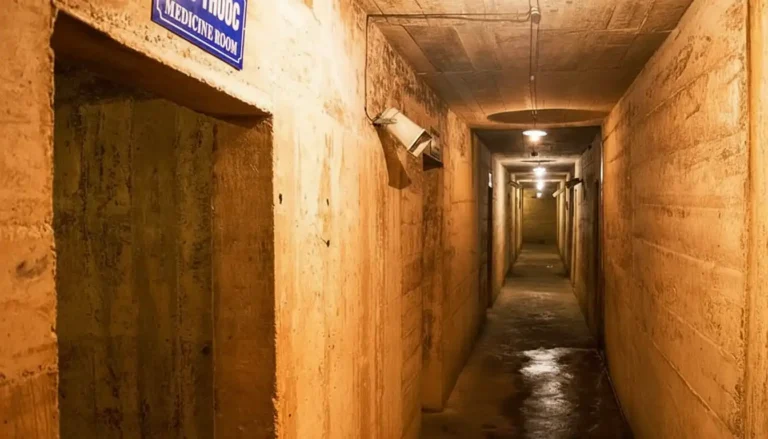
Practical Visitor Information (What Tourists Need to Know)
| Feature | Details |
|---|---|
| Location | Hải Sơn Village, Trân Châu Commune, on the cross-island road of Cát Bà Island, Hải Phòng City. (Approx. 7−13 km North of Cát Bà Town) |
| How to Get There | Easily reached from Cát Bà Town by motorbike/scooter rental (approx. 150,000 VND/day) or taxi/electric car (approx. 180,000 VND one-way). Follow the main cross-island road towards Gia Luận Port. |
| Opening Hours | Daily: 8:00 AM−5:00 PM |
| Entrance Fee | Adults: ∼40,000 VND−80,000 VND (Prices may vary; check locally). Children: Reduced rate. |
| Guided Tours | Available for a small additional fee (∼15,000 VND−50,000 VND) to provide detailed historical context. |
| Contact Information | General inquiries should be directed to the Cát Bà National Park or local tourism offices as the site itself is a historical monument without a dedicated public phone number. Local tour operators often have relevant contact details. |
Visitor Tips & Nearby Attractions
What to Bring: Water, and comfortable walking shoes are highly recommended as there are steps and uneven surfaces inside. The cave maintains a cool, humid temperature.
Time Needed: Plan for approximately 30 to 45 minutes to fully explore the facility.
Nearby Sites: The Military Hospital Cave is perfectly situated to be combined with a visit to the Cát Bà National Park (for trekking) and the beautiful Trung Trang Cave (a natural limestone grotto).
